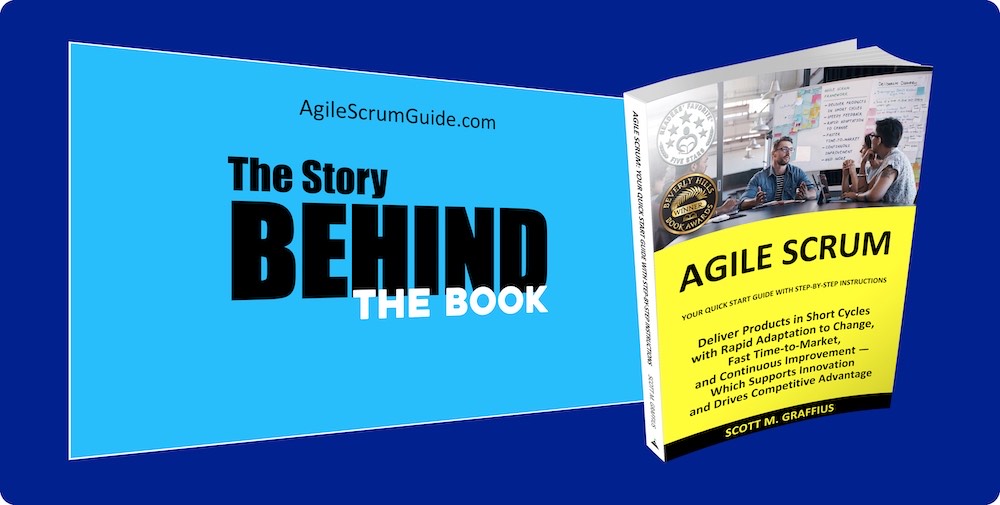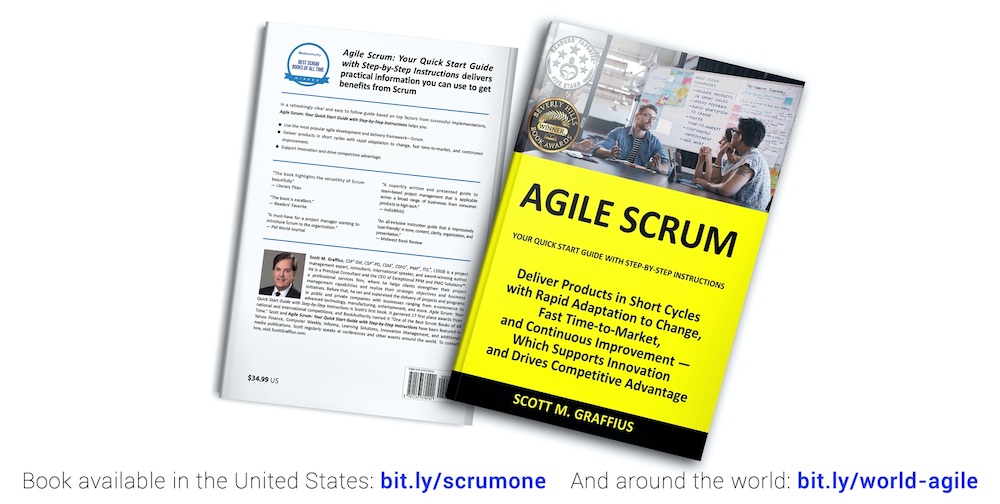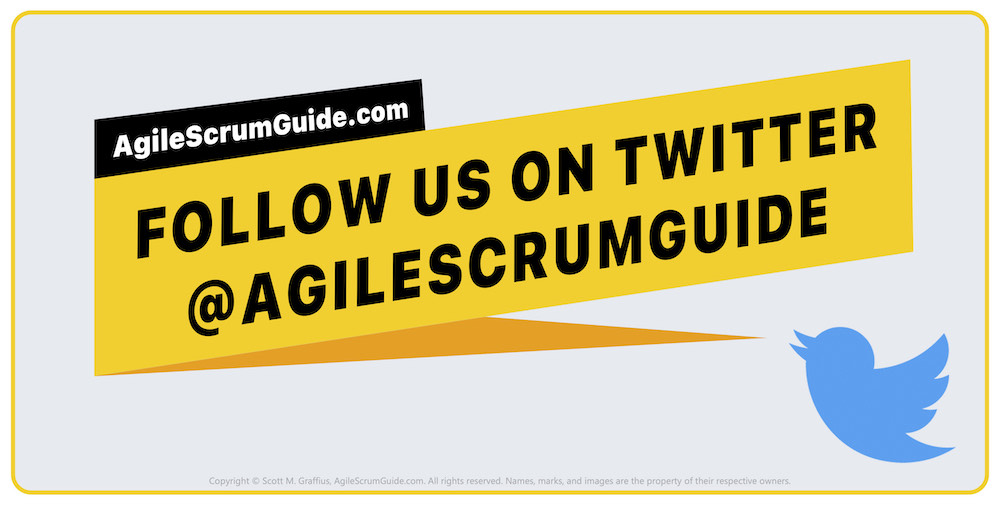The Story Behind “Agile Scrum: Your Quick Start Guide with Step-by-Step Instructions” - Agile Transformation at an Entertainment Company | Part 2
13 March 2019


Agile Workflows

The Story Behind Agile Scrum: Your Quick Start Guide with Step-by-Step Instructions — Agile Transformation at an Entertainment Company
Scott M. Graffius, CEO of Exceptional PPM and PMO Solutions™, helps companies achieve their strategic objectives and business initiatives through project management leadership. A fantastic agile transformation outcome with a client organization in the entertainment industry was the inspiration for Scott's award-winning book, Agile Scrum: Your Quick Start Guide with Step-by-Step Instructions. This is the story behind the book—told by Scott. Identifying details have been changed and certain elements are not included.
This article is the second installment of the eight-part story. If you haven't already read the first post, you can find it here: Part 1: The Call.

Part 2: The Goals
Highlights related to the goals follow.
The executive vice president (EVP) identified his top three desired outcomes:
- Accelerate the development and delivery of products and services—to be faster than the earlier baseline of 6-12 months,
- Improve the satisfaction of the Scrum Team—to be the same or better than it was earlier with the traditional/waterfall approach, and
- Improve the satisfaction of stakeholders—to also to be the same or better than it was earlier with the traditional/waterfall approach.
I individually met with and carefully listened to each member of the Scrum Team. There were recurring themes. We then met as a group and I asked them to identify their top two or three goals. They discussed the matter, voted, and decided on these:
- Meet or exceed the expectations of management, and
- Deliver valuable products.
I individually met with executives from different departments (the stakeholders). In every case, they related that things were OK with the earlier traditional/waterfall approach, but that things were worse now. The stakeholders indicated that, with the earlier approach, someone on the project team worked with their group to gather requirements, and around 6-12 months later the results were deployed. However, it was reported that with the then-current approach, the projects' purpose and requirements were not understood, and that what was produced was unusable. The goals of the stakeholders were:
- For them or their representatives to be as—or more—involved as earlier with the traditional/waterfall approach, and
- Get a usable product as often as—or more frequently than—earlier with the traditional/waterfall approach.
Here's a recap of everyone's goals. The EVP wants the development and delivery of products and services to be faster than 6-12 months, improved satisfaction of the Scrum Team, and improved satisfaction of stakeholders. The Scrum Team wants to meet or exceed expectations of management, and deliver valuable products. The stakeholders want (themselves or via their representatives) to be more involved in requirements/user stories and get useable project-delivered products more frequently than every 6-12 months.
Everyone permitted their goals to be shared with others. After discussing the subject with the EVP, I wrote the goals on oversize paper and posted it in a common area proximate to the Scrum Team and accessible to the stakeholders.
Highlights on the environment, roles, and practices—primarily focused on the Scrum Team—follow.
The Story Behind “Agile Scrum: Your Quick Start Guide with Step-by-Step Instructions” — Agile Transformation at an Entertainment Company continues with Part 3: The Environment.

About Agile Scrum: Your Quick Start Guide with Step-by-Step Instructions

Shifting customer needs are common in today's marketplace. Businesses must be adaptive and responsive to change while delivering an exceptional customer experience to be competitive.
There are a variety of frameworks supporting the development of products and services, and most approaches fall into one of two broad categories: traditional or agile. Traditional practices such as waterfall engage sequential development, while agile involves iterative and incremental deliverables. Organizations are increasingly embracing agile to manage projects, and best meet their business needs of rapid response to change, fast delivery speed, and more.
With clear and easy to follow step-by-step instructions, Scott M. Graffius's award-winning Agile Scrum: Your Quick Start Guide with Step-by-Step Instructions helps the reader:
- Implement and use the most popular agile framework―Scrum;
- Deliver products in short cycles with rapid adaptation to change, fast time-to-market, and continuous improvement; and
- Support innovation and drive competitive advantage.
Hailed by Literary Titan as “the book highlights the versatility of Scrum beautifully.”
Winner of 17 first place awards.
Agile Scrum: Your Quick Start Guide with Step-by-Step Instructions is available in paperback and ebook/Kindle worldwide. Some links by country follow.
- 🇦🇺 Australia
- 🇦🇹 Austria
- 🇧🇪 Belgium
- 🇧🇷 Brazil
- 🇨🇦 Canada
- 🇨🇿 Czech Republic
- 🇩🇰 Denmark
- 🇫🇮 Finland
- 🇫🇷 France
- 🇩🇪 Germany
- 🇬🇷 Greece
- 🇭🇺 Hungary
- 🇮🇳 India
- 🇮🇪 Ireland
- 🇮🇱 Israel
- 🇮🇹 Italy
- 🇯🇵 Japan
- 🇱🇺 Luxembourg
- 🇲🇽 Mexico
- 🇳🇱 Netherlands
- 🇳🇿 New Zealand
- 🇳🇴 Norway
- 🇪🇸 Spain
- 🇸🇪 Sweden
- 🇨🇭 Switzerland
- 🇦🇪 UAE
- 🇬🇧 United Kingdom
- 🇺🇸 United States
- 🌏 More countries

Let's Connect

Connect with AgileScrumGuide.com on Facebook, Twitter, LinkedIn, Instagram, and Pinterest.
And connect with agile project management practitioner, consultant, award-winning author, and international speaker Scott M. Graffius on Twitter, Facebook, and LinkedIn.

© Copyright 2019 Scott M. Graffius, AgileScrumGuide.com. All rights reserved. This material may not be published, broadcast, rewritten or redistributed without the express written permission of Scott M. Graffius/AgileScrumGuide.com.
